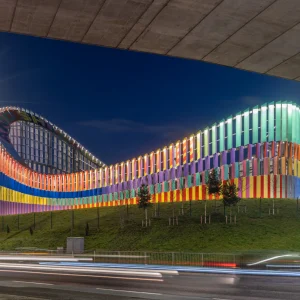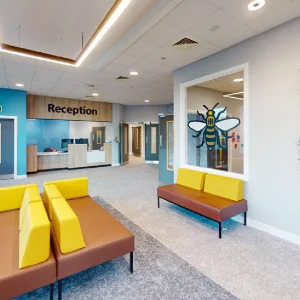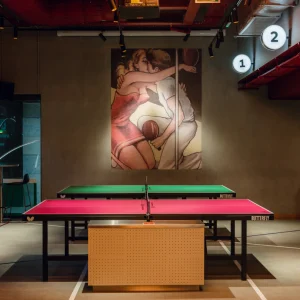Stinson-Remick Hall, dedicated on 3 September 2010, has received LEED-Gold Certification from the United States Green Building Council (USGBC). The renovation scheme was led by Wisconsin-headquartered Conrad Schmitt Studio.
The building’s location on the footprint of a demolished building – the University Club – itself contributed to its sustainable credentials. About 95% of construction waste materials was recycled, including wood, concrete, metal, brick, plastic, and drywall.
Stinson Remick’s energy usage is 13% to 15% as a result of the use of a combination of efficiency technologies. It ranges from heat reclamation, exhaust air, cooling of clean rooms using outside air in winter, occupancy controlled lighting and HVAC, high efficiency lighting, and electricity and heating from a micro-turbine. The energy recovery system installed on the lab exhaust system is expected to save about $65,724 per year, and will pay for itself in eight years.
The roof is installed with a photovoltaic solar array that produces 30kw of electricity for the building. A white roof membrane will help in reducing the heating load on the building in the summer months.
Most of the building materials used were manufactured regionally, including clay pavers, rebar for the concrete structure, the face brick, all the structural steel, and all the concrete. Reinforcing steel for the masonry walls, metal decking for the roof, structural steel for the penthouse, and interior wood doors are all made from recycled materials. Water saving toilets and urinals equate to about 130,850 gallons of water saved per year and a native landscape and drip irrigation system was added to save 51% of normal water usage for irrigation.
Low volatile organic compound (VOC) materials have been made use of for most interior materials, carpet, glues, sealants, and paints, and the building uses environmentally-friendly refrigerants in its cooling systems. In addition, over 75 electrical metering points track the building’s electrical usage and enable building users to pinpoint situations in which energy is being wasted.
Stinson-Remick is the third Notre Dame building to be LEED-certified. Geddes Hall, the home of the University’s Center for Social Concerns and Institute for Church Life, and Ryan Hall have also received LEED-Gold certification.





